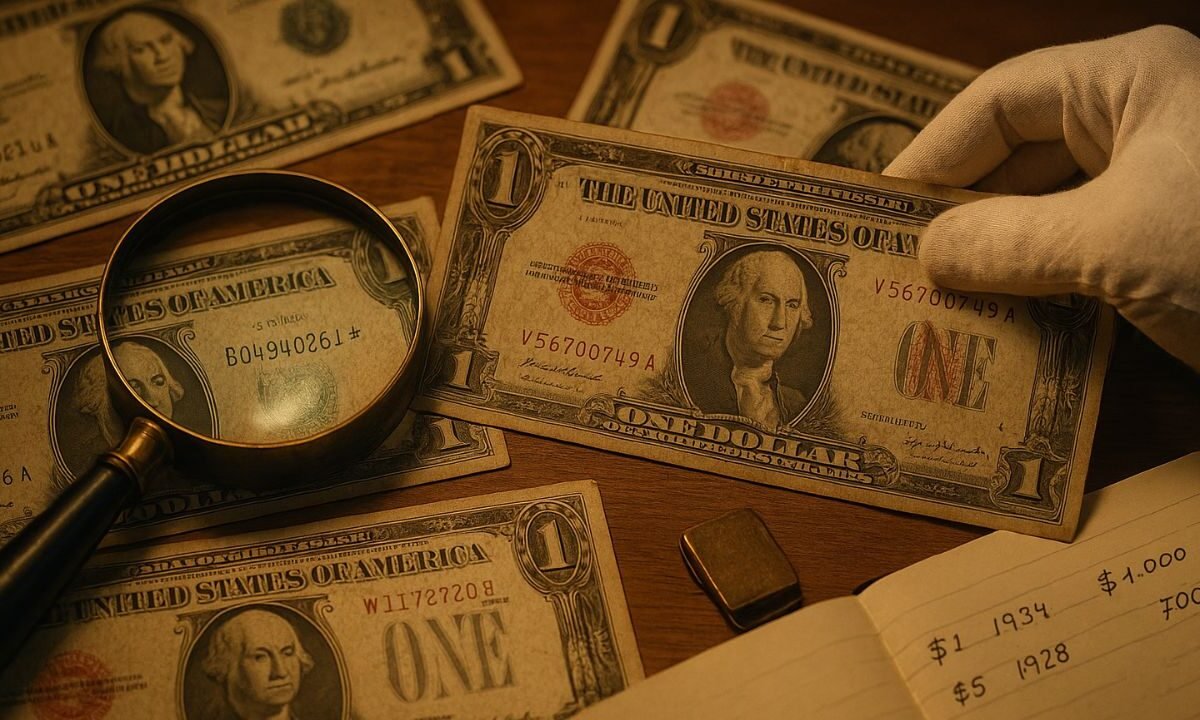If you’ve ever grudgingly accepted a crumpled old dollar bill, you might want to take a closer look before tossing it aside.
Old dollar bills, especially those with rare serial numbers, discontinued denominations, exotic series or major printing errors, are increasingly being snapped up by collectors—and for striking sums. Imagine a bill that once bought coffee now fetching thousands of dollars.
The keywords you need to keep in mind: rare note, high-denomination, error print, star note, uncirculated condition, and discontinued series.
Which Bills Top the “Worth a Fortune” List?
Here’s a snapshot of some of the most valuable categories of old U.S. paper currency:
| Bill Type | Face Value | Why It’s Valuable | Typical Market Value* |
|---|---|---|---|
| $1 bills from 19th century (e.g., 1874 Series) | $1 | Rare series, large-size, limited survivors | Thousands of dollars (e.g., ~$10 k+) |
| High-Denomination (e.g., $5,000 / $10,000) | $5,000 / $10,000 | No longer issued, extremely rare | Hundreds of thousands of dollars |
| Bills with printing or serial-number errors | Varies | Error makes them one-of-a-kind | Tens of thousands or more |
| Star Notes / Replacement Notes | Varies | Replace damaged sheets, very limited count | Premium over normal series |
*Values approximate and vary greatly by condition, rarity, and market demand.
Key Examples You Should Watch
- A Series 1874 $1 United States Note (large size) has sold for over $26,000 in top condition.
- A Series 1928/1934 $10,000 bill can reach $150,000+ in extremely fine condition, and even higher if graded “uncirculated.”
- A bill with a major printing error (such as wrong reverse or misalignment) could sell for $40,000+ or significantly more.
What Makes a Bill Valuable?
Several factors combine to create serious collectible value:
1. Rarity & Series
If the bill is from a series long out of circulation—especially large-size notes printed before the mid-1920s—or one of the high-denomination bills ($500, $1,000, $5,000, $10,000) that were officially discontinued, it already has rarity built in.
2. Condition (Grade & Crisp-ness)
Collectors pay premiums for notes in uncirculated or near-uncirculated condition. Lots of wear, folds, stains or repairs reduce value dramatically.
3. Serial Number & Star-Note / Replacement Features
Low serial numbers (000000xx), or “star” serial numbers (★ prefix) make a note much more desirable. Replacement notes were printed in smaller quantities.
4. Errors / Unusual Prints
Misprints, denomination mismatches, wrong backs, or unusual coloring generate serious buzz among collectors. Even common bills could have hidden value if they carry error features.
5. Historical Context & Documentation
Bills tied to notable banks, specific charter numbers, or unique back-stories (e.g., bank failure, short print run) add value.
How You Might Spot a Hidden Gem
- Check old bills in drawers or boxes and look for high denominations that aren’t printed anymore (e.g., $500, $1,000, $5,000).
- On any old note, look at the series year, seal color, serial number, and whether it’s a star note.
- If a note is crisp, clean, without folds, it may be worth sending for professional grading.
- Don’t assume face value = only value. If a note is uncommon, it could be worth many times face value.
Things to Remember & Watch Out For
- Not all old bills are valuable—many still trade at just face value or modest premiums. Condition counts tremendously.
- Beware of counterfeits or replicas especially of high-denomination notes. Always authenticate.
- While they remain legal tender, most collectors never spend them—doing so would be throwing money away.
- The market for rare bills fluctuates based on demand, condition and authenticity.
Your old dollar bill(s) could just be paper… or they might be hidden collectible treasures waiting for a serious payday.
While you shouldn’t assume every old bill is worth thousands, knowing the key keywords—rare series, high-denomination, star note, printing error, excellent condition—can help you decide whether to toss, spend or maybe send it to a currency expert.
Take a moment to check your stash: you might be sitting on something far more valuable than its face value suggests.
FAQs
Are old dollar bills always worth more than face value?
No — many old bills still trade just at or near face value if they’re from common series, circulated heavily or in poor condition. Only certain rare series or condition levels command big premiums.
I found a $500 bill—what should I do?
First confirm the series year, condition, and whether it’s a common issue or from a limited bank charter. Then consider contacting a reputable paper-money dealer or grading service—$500 notes from rare series may be worth thousands.
Can I spend a rare old bill at face value?
Yes, it remains legal tender, so you could spend it. But for rare examples, spending it means losing potential collectible value, often many times greater than the face amount.

